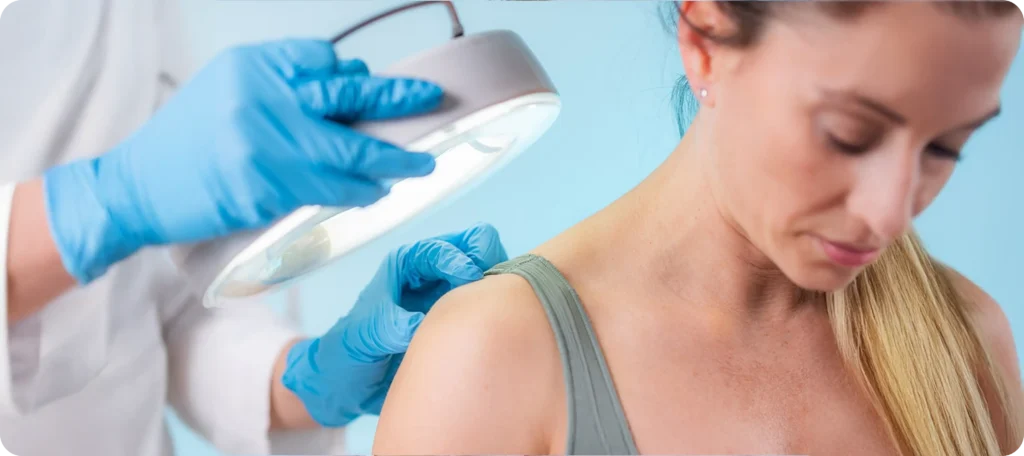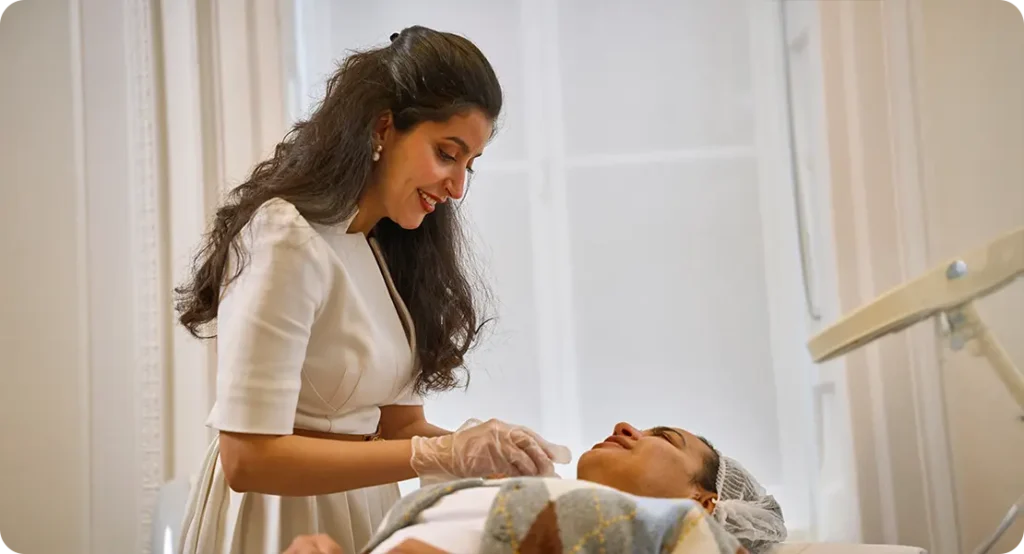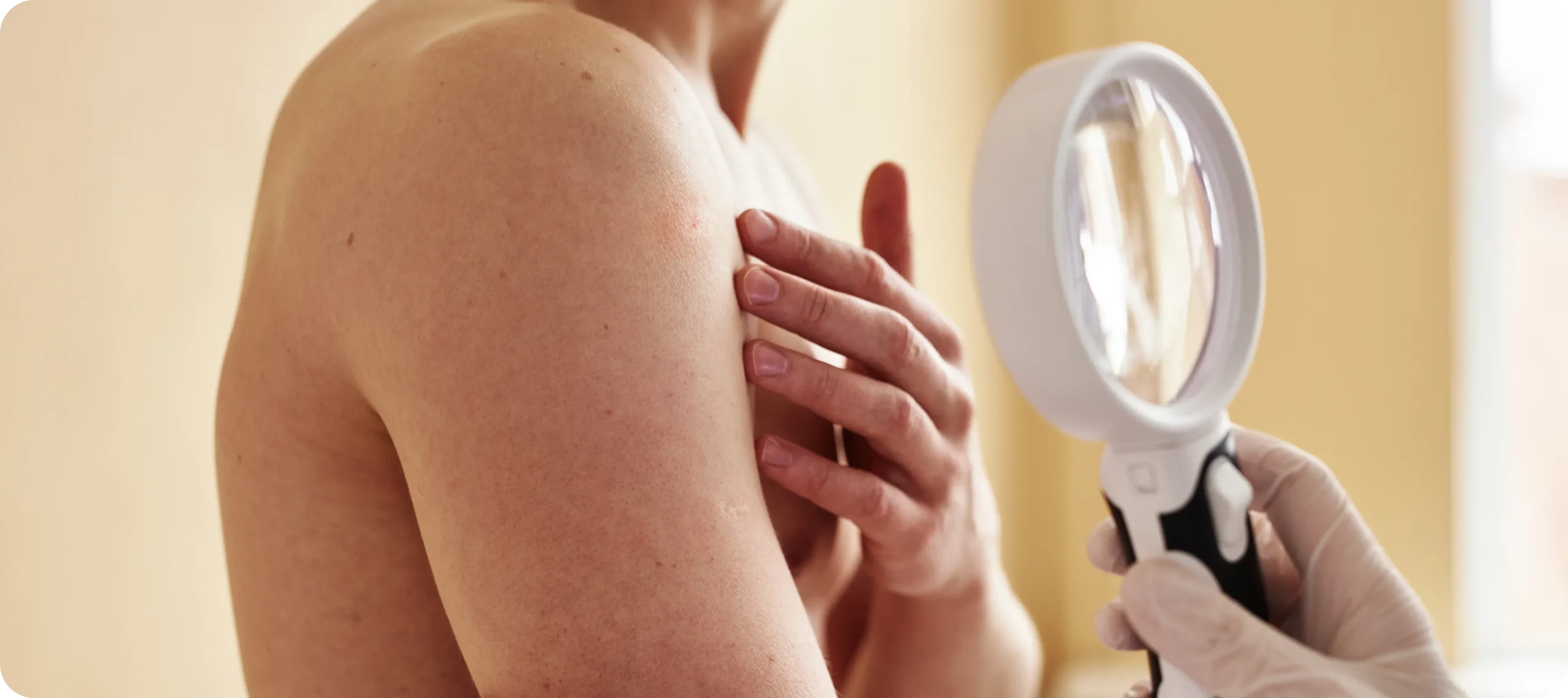Let’s face it—most of us only think about our skin when there’s a rash, a spot that won’t go away, or something visible and irritating. But your skin, being your body’s largest organ, can quietly show signs of more serious health issues if you know what to look for. That’s exactly why full-body skin exams are so important. They’re not just about checking for skin cancer—they’re about keeping your overall health in check.
When you visit a dermatologist for a full-body skin exam, the goal isn’t just to give you a once-over. It’s a thorough assessment designed to spot any abnormalities early on, when they’re most treatable. Even if you feel perfectly fine, having a professional take a closer look can make a big difference.
What Happens During a Full-Body Skin Exam?
If you’ve never had one before, a full-body skin exam might sound a bit daunting. But it’s actually a straightforward, quick, and generally comfortable process. The dermatologist will examine your skin from head to toe, often using a dermatoscope—a tool that allows for a magnified view of skin structures not visible to the naked eye.
You’ll usually be asked to undress and wear a gown so every part of your skin can be checked, including areas you might not think about, like your scalp, soles of your feet, and behind your ears. It’s all done with respect and discretion.
Here’s what dermatologists typically look out for during the exam:
Suspicious Moles or Lesions
Spotting an unusual mole or lesion is one of the first things a dermatologist focuses on during a full-body skin exam. While many moles are completely harmless, certain features can suggest a potential problem. Dermatologists look for irregularities in size, shape, and colour, which could indicate that a mole is not behaving as it should. Even if a mole seems minor to you, it might present patterns that raise concern to a trained eye.
The ABCDE rule is a simple but effective method used to identify signs of melanoma. Asymmetry, border irregularity, colour variation, diameter greater than 6mm, and evolution over time are the five main criteria. A mole that meets one or more of these points may be flagged for further examination. Using a dermatoscope, dermatologists can study the internal structure of the lesion to assess whether it poses a risk.

If a suspicious mole is found, the next step may involve monitoring it through photographs or measuring changes over time. In some cases, a small sample will be removed and sent for laboratory analysis. If caught early, melanoma is one of the most treatable forms of cancer. That’s why identifying unusual moles during a skin exam is such a critical part of preventative care.
Actinic Keratoses (Precancerous Lesions)
Actinic keratoses are patches of skin damage caused by long-term exposure to ultraviolet (UV) rays, most often from sunlight. They tend to appear as dry, rough, or scaly areas, usually on parts of the body that have received the most sun over the years—such as the face, ears, scalp, and backs of the hands. People often mistake them for dry skin or mild irritation, but they are in fact early warning signs of skin deterioration.
These lesions are not cancerous in themselves, but they are considered precancerous because they have the potential to develop into squamous cell carcinoma if ignored. While some may remain unchanged for years, others may grow or become inflamed. A dermatologist’s role is to spot these early changes before they progress. They can also assess whether a cluster of lesions increases your overall risk.
Once identified, actinic keratoses are usually treated straight away. Depending on the number and severity, treatment might involve freezing the lesion with liquid nitrogen, applying topical medication, or using specialised light therapy to remove damaged cells. While treatment is relatively quick, early detection is the real key to avoiding more serious outcomes. Regular skin checks are the best way to ensure these changes are picked up and dealt with swiftly.
Non-Melanoma Skin Cancers
Non-melanoma skin cancers often begin as small, unassuming patches or bumps that grow slowly over time. Basal cell carcinoma, the most common type, may look like a shiny spot or pinkish growth and often occurs in sun-exposed areas. Because it rarely causes pain or discomfort in the early stages, it’s easy to overlook until it becomes more prominent or begins to bleed.
Squamous cell carcinoma is the second most common non-melanoma skin cancer and typically presents as a scaly, crusted, or thickened area of skin. It may feel sore or become irritated and usually doesn’t heal on its own. This type has a higher chance of spreading than basal cell carcinoma, especially if found in sensitive areas like the ears, lips, or around the eyes. Dermatologists carefully assess these areas to ensure no signs are missed.
Both types can be effectively treated when found early, often through surgical removal or topical therapies. The goal is to treat the cancer before it causes damage to nearby tissues or becomes more complex to remove. A full-body skin exam increases the likelihood of finding these types of skin cancer while they’re still small and manageable, which significantly improves treatment outcomes.
Skin Conditions You Might Not Notice
Chronic skin conditions often creep in gradually and may go unnoticed or be dismissed as temporary irritation. Psoriasis can begin with small red patches covered in silvery scales, while eczema may present as dry, itchy areas that flare up from time to time. Without a professional assessment, these signs can be misinterpreted, leading to delayed or ineffective treatment.
A dermatologist is trained to recognise the early stages of these conditions and to differentiate between similar-looking problems. During a full-body exam, they can assess less visible areas such as the scalp, back, or folds of skin where issues can develop unnoticed. They may also ask about patterns or triggers you might not connect to your symptoms, such as stress, diet, or seasonal changes.

Identifying these conditions early means you can begin a tailored treatment plan sooner, often preventing the issue from becoming more severe or widespread. Whether it’s through prescribed creams, lifestyle adjustments, or more advanced therapies, early action makes management much easier. Seeing a dermatologist for a full-body check is often the first step in breaking a frustrating cycle of misdiagnosis or untreated symptoms.
Unusual Pigment Changes or Growths
Changes in skin pigmentation are often subtle and gradual, making them easy to ignore. Light or dark patches that develop without an obvious cause may be mistaken for normal skin variations, especially in people with naturally uneven tone. However, these changes can sometimes signal underlying health concerns, which is why they warrant closer inspection during a skin exam.
Pigment changes may be linked to autoimmune conditions such as vitiligo or inflammatory issues like lichen planus. These conditions often begin with isolated discoloured areas that slowly expand. While they may not be painful, their appearance can be distressing and affect self-confidence. Early diagnosis allows dermatologists to provide support and recommend suitable treatments to manage the condition and reduce the impact on daily life.
In other cases, pigment changes can point to systemic problems like hormonal imbalances, metabolic disorders, or even internal organ issues. When dermatologists spot unusual changes, they may recommend further testing or refer you to another specialist. This approach ensures that any underlying condition is addressed promptly, preventing it from developing unnoticed. A full-body skin exam can, therefore, offer insights that go far beyond the skin’s surface.
Why Regular Skin Exams Matter
Even if you’ve never had any skin concerns, making regular skin exams part of your routine is one of the simplest yet most effective ways to protect your long-term health. Many people wrongly assume that skin cancer only affects those with a lot of moles or frequent sun exposure, but the reality is that anyone can be at risk. People with fair skin, those who burn easily, or individuals with a personal or family history of skin cancer are particularly vulnerable. However, darker skin tones are not immune either—skin cancer can affect all ethnicities and may go unnoticed for longer when symptoms are less obvious.
One of the most challenging aspects of skin monitoring is the difficulty of spotting changes in hard-to-see areas. Places like your back, scalp, and behind your legs are tricky to examine thoroughly, especially if you’re relying solely on mirrors or phone cameras. Moles and marks can evolve slowly, and unless you’re doing a very detailed check, you might miss subtle changes. A trained dermatologist, on the other hand, has the experience and tools to pick up on signs that you’d likely overlook. Their knowledge of what constitutes a normal variation versus a potentially dangerous one makes their role essential in early detection.
Regular skin exams also create a helpful record of your skin’s baseline, allowing any changes to be detected more easily over time. Dermatologists may take photographs of certain moles or patches and use those as references for future appointments. This approach helps catch developments that might not seem significant at first glance but could indicate the early stages of a problem. With consistent monitoring, skin issues are more likely to be caught early, when treatment is simplest and outcomes are most positive.
How Skin Exams Are Conducted
A full-body skin exam typically takes place in a private consultation room and is carried out with your comfort and dignity in mind. You’ll be asked to change into a gown and may be offered a blanket or sheet for additional coverage. The dermatologist will guide you through the process and explain which areas they’ll be examining. You’re welcome to ask questions at any time, and the exam can be paused if you feel uncomfortable.
The check starts at the top of your head and moves systematically down your body, including the scalp, behind the ears, the back, buttocks, legs, and even between the toes. Areas that are often overlooked in everyday life—such as under the breasts, beneath the nails, and around intimate areas—may also be checked, depending on your comfort and consent. Dermatologists use bright lighting and, in many cases, a dermatoscope to look beneath the skin’s surface, identifying patterns and structures that aren’t visible with the naked eye.

If something unusual is found during a full-body skin exam, your dermatologist will take careful steps to assess it further. The first thing they may do is photograph the area to establish a visual record. This allows them to monitor any changes in size, shape, or colour over time, especially if the spot doesn’t immediately require removal. Measurements may also be taken to track precise dimensions, helping to identify subtle growth that might otherwise go unnoticed at follow-up appointments.
In some cases, a biopsy may be recommended. This is a quick and generally low-risk procedure that involves removing a small portion of the affected skin under local anaesthetic. It’s performed right there in the clinic and takes just a few minutes. The sample is then sent to a specialist laboratory, where it’s analysed under a microscope to determine whether the cells are benign, pre-cancerous, or cancerous. The results typically come back within a week or two, at which point your dermatologist will explain the findings and any necessary next steps.
The entire skin exam itself is usually completed in just 10 to 20 minutes, depending on the number of moles or lesions to review. Despite being brief, it offers immense value by identifying issues at an early stage when they are much easier to treat. Many people find the reassurance that comes from a professional check-up well worth the time and effort. For those with a history of sun exposure or a family background of skin cancer, regular exams provide a crucial safeguard against more serious health problems down the line.
During or after your exam, your dermatologist may:
- Photograph moles that appear irregular or show early signs of change
- Use precise measurements to monitor lesion size over time
- Perform a biopsy if a mole or patch looks suspicious under magnification
- Advise you on how often you should return for follow-up checks
- Provide tips for at-home monitoring and sun safety habits to protect your skin year-round
Conclusion
Full-body skin exams are about far more than just ticking a box. They’re a vital part of maintaining your overall health and catching serious conditions before they become life-threatening. By understanding what dermatologists are looking for, you can feel more informed and empowered to take charge of your skin health. So, if you haven’t had a skin check in a while—or ever—it’s definitely time to book one in. Your future self will thank you. If you’d like to arrange a full skin exam with one of our expert dermatologists, please don’t hesitate to contact us at the London Dermatology Centre.
